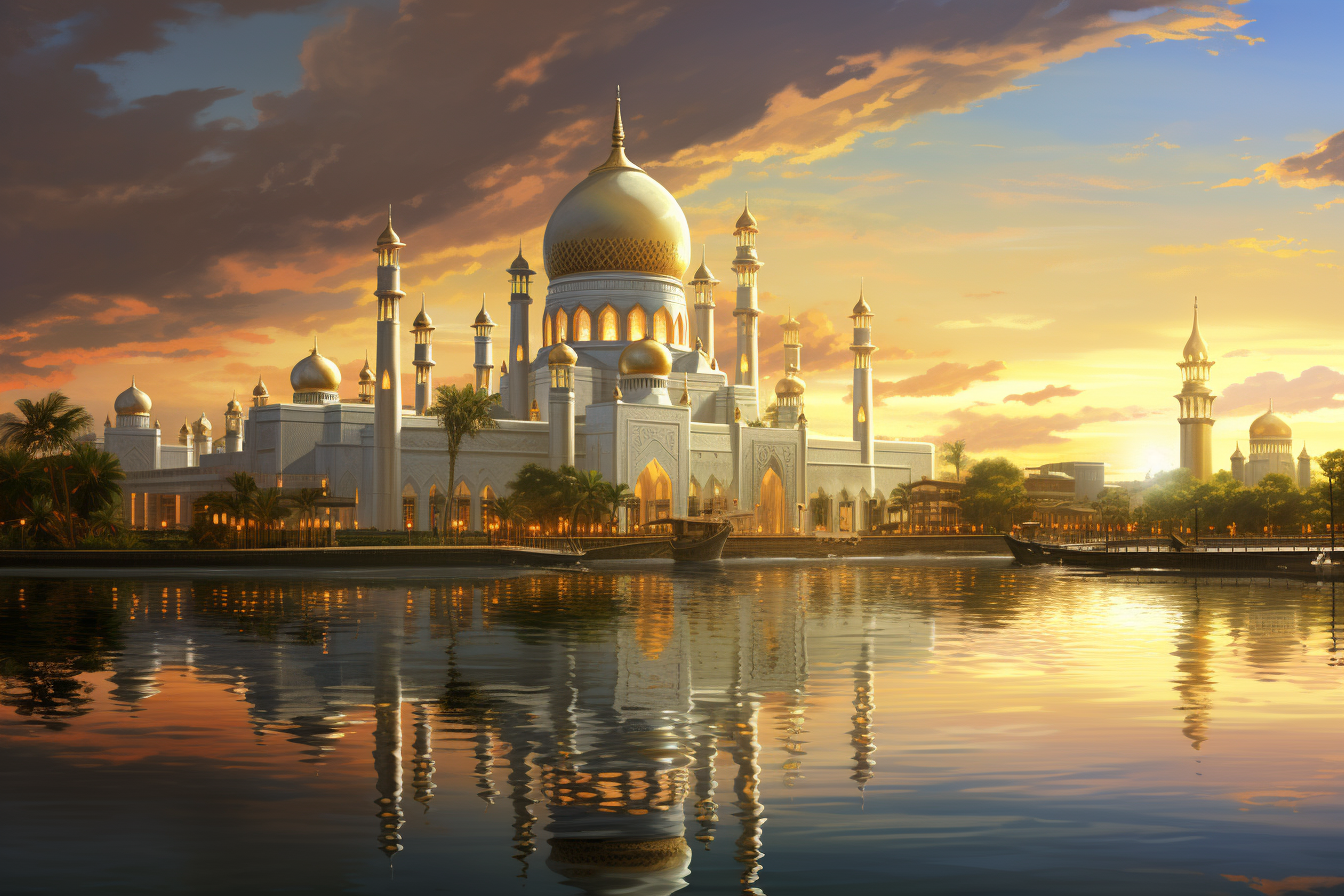A Timeline of Brunei
A broad timeline of Brunei.

Paleolithic Era (circa 30,000 BC - 10,000 BC)
During the Paleolithic or Old Stone Age, early humans in the region were nomadic hunter-gatherers. They relied on simple stone tools and were primarily dependent on hunting and foraging for sustenance. Evidence from this period includes stone tools and remnants of animal bones.
Neolithic Transition (circa 10,000 BC - 3,000 BC)
The Neolithic period marked a significant shift from hunting-gathering to settled agriculture. In Brunei, this transition was evident with the appearance of pottery, polished stone tools, and evidence of plant cultivation. The rise of agriculture led to more permanent settlements and the domestication of animals.
Metal Age and Trade (circa 3,000 BC - 500 AD)
The use of metal, especially bronze, marked a new era in Brunei's prehistory. The region saw the development of more advanced tools, ornaments, and weapons made of bronze and later iron. Brunei's strategic location along the coast facilitated trade with neighboring regions. Artifacts found in Brunei from this period indicate trade relations with areas as far as China and Indochina. The presence of spindle whorls suggests weaving activities, and glass beads indicate long-distance trade networks.
Cultural Exchanges and Early Societies (circa 1,000 BC - 500 AD)
As trade networks expanded, Brunei experienced cultural exchanges with other parts of Southeast Asia. The influence of the Dong Son culture from northern Vietnam is evident in certain artifacts, such as the iconic Dong Son drums. These interactions suggest that Brunei was part of a broader Southeast Asian maritime trade network, leading to the exchange of goods, ideas, and technologies.
Early Maritime Trade (500 AD - 7th century)
With its strategic location along the South China Sea, Brunei became a part of the maritime trade networks. Chinese records mention "Puni" or "Poli," believed to be early references to Brunei, as a trading partner.
Emergence as a Trading Port (7th century - 9th century)
Brunei began to gain prominence as a vital trading port in the region. Its strategic location along the South China Sea facilitated interactions with traders from China, India, and other parts of Southeast Asia. This period saw an influx of goods, ideas, and cultural exchanges, laying the foundation for Brunei's rise.
Introduction of Islam (10th century - 12th century)
Islam made its way to Brunei through traders and missionaries from the Arabian Peninsula and India. The new religion gradually gained followers, intertwining with local customs and beliefs. Over time, Islamic teachings influenced Bruneian governance, trade, and culture.
Consolidation of Power (12th century - 14th century)
As Brunei's influence grew, local leaders began consolidating power, leading to the formation of a more centralized political structure. The region saw the establishment of early political entities, paving the way for the emergence of the Bruneian sultanate.
Establishment of the Sultanate (14th century - 15th century)
By the 14th century, Brunei had fully embraced Islam, and the first sultanate was established under Sultan Muhammad Shah. Under his leadership, Brunei expanded its territories and influence, marking the beginning of the Bruneian Empire. The sultanate established diplomatic ties with neighbouring kingdoms and China, further cementing its status as a regional power.
Golden Age of Brunei (15th century - 17th century)
The Bruneian Empire reached its zenith during this period, with territories spanning from the Philippines to parts of Borneo. Trade, especially in spices and precious woods, flourished, and Brunei became a hub of Islamic learning and culture.
Internal Strife and Territorial Losses (17th century)
The Bruneian Empire, once a formidable power in the region, began to experience internal challenges. Succession disputes, coupled with administrative inefficiencies, weakened the central authority. This internal strife made Brunei vulnerable to external threats, leading to the loss of key territories.
European Exploration and Initial Contact (late 17th century - early 18th century)
European powers, driven by their quest for spices and new trade routes, began exploring Southeast Asia. The Spanish, from their base in the Philippines, were among the first Europeans to make contact with Brunei. While initial interactions were primarily trade-focused, they marked the beginning of European interest in the region.
British Involvement and Diminishing Influence (18th century - 19th century)
The British, seeking to expand their colonial holdings, started to establish a presence in Borneo. Their involvement in the region's affairs, often under the guise of trade agreements and protection treaties, further eroded Brunei's sovereignty. The sultanate found itself caught between the interests of European powers and regional rivals.
Treaties and Territorial Cessions (late 19th century)
Facing external pressures and internal challenges, Brunei entered into a series of treaties with the British. These agreements, while providing some protection against other colonial powers, led to significant territorial cessions. By the end of the 19th century, Brunei was a shadow of its former self, with much of its territory under British control or influence.
British Protectorate (1888 - 1984)
Facing threats from neighboring powers, Brunei became a British protectorate in 1888. While the sultans retained their titles and some internal autonomy, the British controlled foreign relations and defense. The discovery of oil in the 20th century transformed Brunei's economy.
Independence and Modern Era (1984 - Present)
Brunei gained full independence from Britain in 1984. Under the leadership of Sultan Hassanal Bolkiah, the nation has focused on economic development, leveraging its vast oil and gas reserves. Brunei has also emphasized its Islamic identity, implementing Sharia law in recent years.





